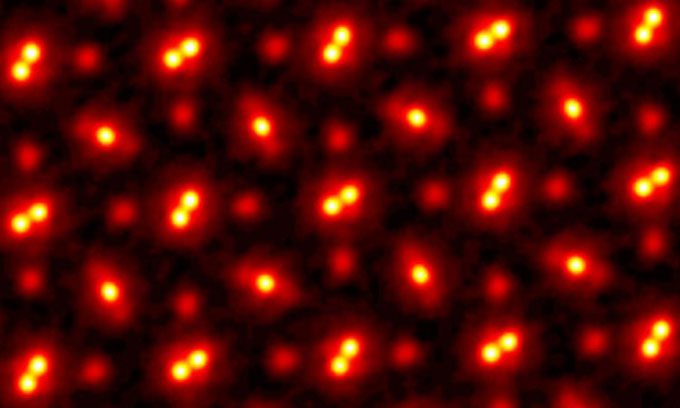Cornell University, USA, has released an image magnified 100 million times showing the thermal vibrations of atoms in a Praseodymium Orthoscandate (PrScO3) crystal.
In 2018, researchers at Cornell University developed a high-power detector combined with a process based on an algorithm called Ptychography, setting a world record by tripling the resolution of modern electron microscopes. However, this approach had a drawback: it only worked with ultra-thin samples. Anything thicker than a few atoms caused electrons to scatter in ways that could not be separated.

The highest resolution atomic image ever taken. (Image: Cornell University).
Now, the research team led by Professor of Engineering David Muller has broken their own record with a pixel array detector on the Electron Microscopy with Adaptive Phase Contrast (EMPAD), combining even more complex 3D Ptychography algorithms that allow for significantly enhanced resolution. This advancement enables them to pinpoint the locations of individual atoms in three dimensions.
The image above shows individual atoms in a Praseodymium Orthoscandate (PrScO3) crystal magnified 100 million times using this new imaging technique. The resolution has been refined to the point where the remaining blurriness is merely the thermal vibrations of the atoms themselves, the authors of the study emphasized in a report published in the journal Science.
“This not only sets a new record but also reaches the ultimate limit. Essentially, we can now easily determine the positions of atoms. It opens up entirely new measurement possibilities that help solve long-standing issues in physics,” Muller shared.
Ptychography is a computational imaging method in microscopy. It works by processing multiple consistent interference patterns—scattered from a specific object—and searching for changes in overlapping regions. By observing how the pattern changes, researchers can reconstruct the shape of the object that caused that pattern.
This new technique is particularly useful for imaging semiconductors, catalysts, and quantum materials. It can also be applied to thick biological cells or tissues, even to synaptic connections in the brain.





















































